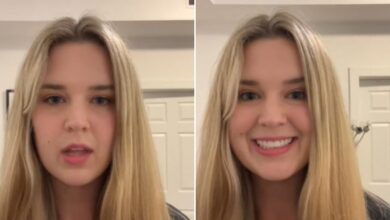I’ve ‘hunted ghosts’ for paranormal TV shows my whole career. These are the tricks they use to fool you

There was a time in my life where I would have rather been caught watching porn than tell people I’m a paranormal investigator. And that’s because it was difficult to suppress the secondhand shame I’d feel from seeing a lot of the methods highlighted in popular programs, almost all of which are plagued with false positives. Let me explain.
I’ve been studying and investigating the paranormal days before my 18th birthday — more than half of my life. I’ve been fortunate enough to be featured on what is considered the gold standard of para-investigative TV shows: A&E’s Ghost Hunters. I’ve also been able to launch my own series, Haunted Discoveries, which I made with co-star and founder of the American Paranormal Research Association, Brandon Alvis.
Through that work, I’ve attended events and investigations at locations many investigators wait years to cross off their bucket list. But I’ve also seen how people intentionally fake evidence of the paranormal — and how they utilize devices that are, to put it bluntly, not worth the plastic they’re 3D-printed with.
More than 50 percent of Americans believe ghosts are real, and a belief in some kind of life after death is a globally recognized phenomenon that is cross-cultural and dates back thousands and thousands of years. There are many people in this industry who, like half of all Americans, believe seriously in paranormal investigation. It’s not all charlatans trying to make a quick buck off people’s grief.
But there are some serious problems — beginning with the technology problem.
If you’ve watched a so-called “ghost-hunting” show, you’ve probably seen an investigator lay down a cylindrical device adorned with blinking lights, a small speaker and an antenna known as a REM pod. If you hover your hand near one, or touch the antenna directly, the device will beep loudly and lights on the pod will shine, indicating where the source of movement originated. Presumably, if there’s a ghost living out its afterlife, strolling through the halls, and it just so happens to brush past one of these pods, it’ll go off. Or, if you ask a ghost you suspect is with you in the room to touch it, and the REM Pod sounds off, boom, you’ve got yourself spirit communication.
In such shows, Investigators will set these down and invite entities to come and interact with the REM pod as a means of beyond-the-grave communication. Prior to this, viewers watching a show will learn about the lurid claims surrounding a location: a young woman who was murdered, for instance, or a grizzled man with a mean streak who’s been known to terrorize visitors by appearing when they least expect it so they fall down the stairs to their doom.
An investigator will stand a few feet away from the REM pod, allow the tension of silence to fill the room. They will look at the device intently and ask, focused, with intensity: “Is there anyone here with us right now?”
The REM pod beeps. Holy s**t!
“Are we speaking to a woman right now?” Silence.
“Are we speaking to a man?” There’s a pause, then BEEP. Double holy s**t!
The question-and-answer format seems to confirm that there is indeed someone communicating with the REM pod who isn’t physically in the room. There’s a slight problem, however — and it’s that REM pods are utterly useless for TV purposes.
These devices are ridiculously sensitive to various radio frequencies and cellular communication. Electronics have been known to set them off as well. So when you have a production crew — camera ops, sound engineers, bored production assistants tired of listening to people speaking to nothing in the dark on their cellphones, and paranormal investigators equipped with lavalier microphones — it’s impossible to trust any type of REM pod interaction as evidence of paranormal activity.
In fact, REM pods can even be triggered at will — and from quite a far distance away, depending on the model — by a simple key-press of a walkie. I’ve been to events and investigations where some people, presumably because they get a kick out of scaring folks, intentionally fake REM pod interactions by keying walkies to make it seem like there’s “something strange in your neighborhood.”
There is something strange, but it isn’t a ghost — it’s you wasting your life when you could be implementing sound methodology to document evidence of the paranormal. (Yes, it is that deep — to me, anyway.)
It’s for this reason that Brandon and I forbade the usage of walkies on set during the filming of our own show, and only have one set on-hand that is turned off until we use them for specific segments that necessitate their usage. They are shut off when no longer needed.
But REM pods are not the only problem with other paranormal investigative shows.
There’s a long-standing theory in paranormal research that there’s a correlation between supernatural activity and electromagnetic frequencies, or EMF. This theory isn’t one I would discount entirely. There are respected investigators who’ve documented strange occurrences not readily explained via known, empirical means that were tied to EMF.
However, in many ghost-hunting programs, EMF is measured via analog trifield meters, which I have also seen manipulated by walkies intentionally. Like with REM pods, these tactics are often used in order to support a false narrative of specific ghostly activity when combined with leading questions posed to the darkness in purportedly haunted locations. These devices are overly sensitive and lend themselves to false positives and fraud. But that doesn’t mean one should toss out EMF: finding technology that is well-insulated against external triggers is a good way to measure electronic frequencies in an investigation, and there are digital trifield meters that aren’t so easily manipulated that one can use as well.





